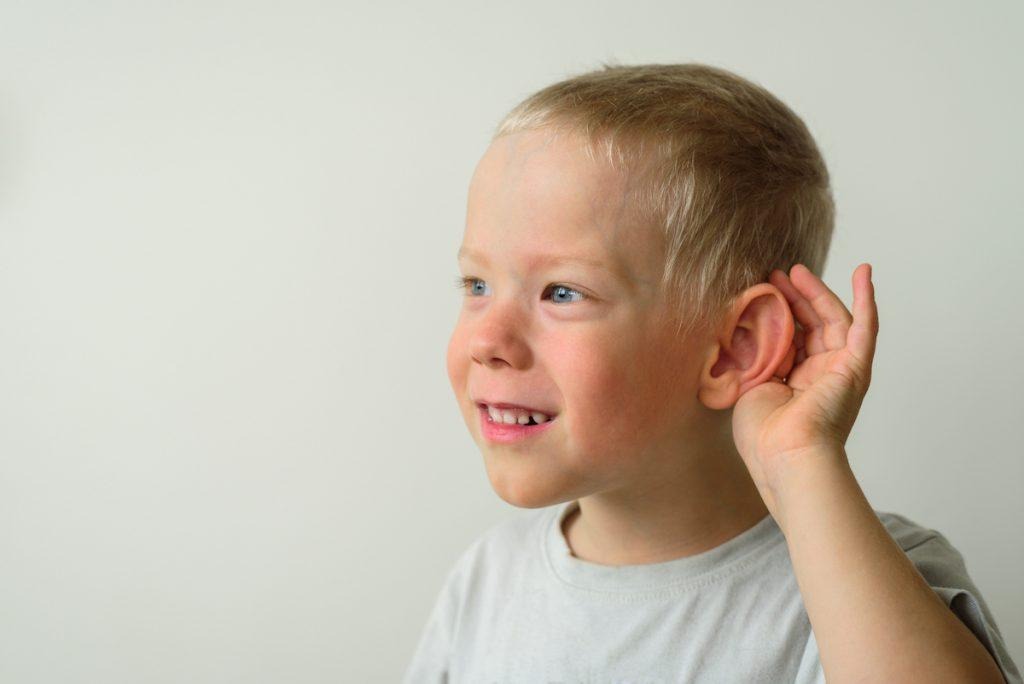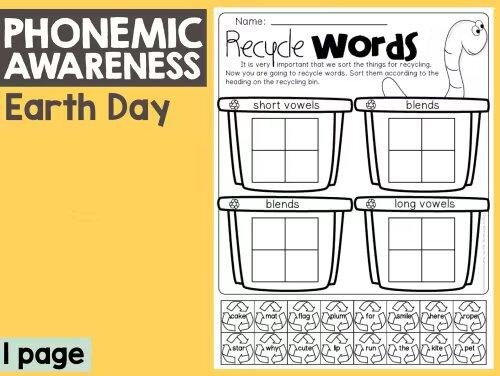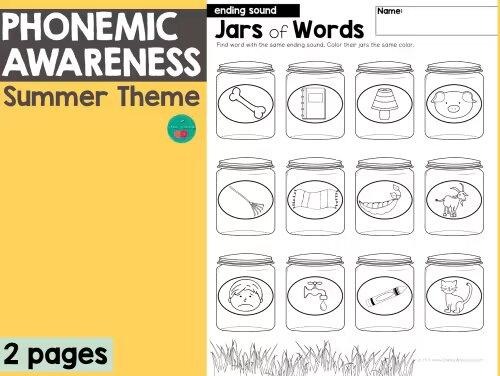There are 26 letters in the English alphabet, which can be linked to 44 sounds. Children learn the sounds and to make meaning through developing their phonological awareness, then learning to manipulate the sounds, as they develop phonemic awareness.
In this article, we will unpack what phonological and phonemic awareness are, the relationship between the two, and how to develop them in the classroom.
Table of Contents
- Phonological & phonemic awareness
- Four phonological skills
- How to develop Phonological Awareness
- Teaching Phonological and phonemic awareness
- Ideas to implement and improve Phonemic Awareness
- Two useful resources
Phonological & phonemic awareness
What is Phonological Awareness?
Phonological awareness is the way we can hear a language and begin to make sense of the world via the sounds. We recognize words, separate syllables and then phonemes. Having understood all of this, we learn to manipulate the sounds to communicate. This means reading, understanding and creating words.
What is phonemic awareness?
Is the term used to describe the way we can identify the individual sounds (phonemes) in a word and then manipulate them. This includes breaking down words into sounds, then putting them together again to make words.
In the word, ‘moon’, the three phonemes are ‘m’ ‘oo’ ‘n’. A child will learn to recognize the phonemes, then break up the word. As their phonemic awareness progresses, a child can learn to put sounds together to create different words.
Phonemic awareness vs Phonic awareness
Is the ability to hear sounds and begin to realize that they have meaning. A child develops awareness from birth. They first learn to recognize sounds, then to make them. By the age of about six or seven, they have mastered the sounds of the language.
Phonemic awareness is the ability a child develops to recognize individual sounds or phonemes. As they learn the language, they work out that certain sounds can be put together to create different words and different meanings.
Think about phonological awareness as being the umbrella and phonemic awareness as a skill that falls under it.
Similarly, a language works via sounds, which are manifest in words. These can then be broken down and rearranged to make more words and other meanings.

What are the benefits of Phonemic Awareness?
A child who is aware of phonemes can break up words into individual sounds, then put them together into word forms that can be recognized.
This helps children to read, because they can work out words, or at least part of words, from the sounds they recognize. The child will be able to sound out individual phonemes and use them to build up a word.
Phonemic awareness also helps children learn to spell, because they begin by understanding the alphabetic principal, that letters stand for sounds. They will learn the letters that go with the individual sounds and can then put them together on paper in words they know how to pronounce.
Four phonological skills
1. Knowledge
Knowledge is something you build up along the way, often without being aware of it. The knowledge that is required to develop phonological awareness is gathered by listening and then trying to communicate. The best way for a child to develop this skill is to listen actively. This can be encouraged by reading, discussing and playing games.
2. Familiarity
The more a child hears language spoken, the more they will become familiar with the different sounds making up the language. This is what usually happens if the language is spoken at home. To add to this familiarity, it includes a lot of oral work in the classroom, including instructions, general conversation, recordings and songs.
3. Keenness
Anyone learns best if they want to learn. This means that a child will develop a better phonological awareness if they are encouraged to listen to spoken language and even be excited about it.
Try to encourage the act of listening in class. Choose songs and stories the children like. Guide them to repeat parts of stories or rhymes. You can even help them to begin to make up their own rhymes, or simply to find other words that rhyme with one they already have heard.
4. Mindfulness
To be mindful is to be consciously aware. It is not about just listening to something, but about being aware that you are listening and making sense of what that means. For example, students should be encouraged not to just sit passively while a recording of a nursery rhyme plays. They should be asked to listen for something specific in the recording.
Ask the class to sit quietly. Play one line of a nursery rhyme. Play it again a few times. Then, play the whole nursery rhyme and ask the children to put up their hands when they hear the line.

How to develop Phonological Awareness
It is possible to develop a child’s phonological awareness by exposing them to more and more of the language being used. Read aloud to the kids, especially stories or books that use rhymes. You can also sing nursery rhymes with them. Ask them to pick out any sounds they hear more than once.
When you read, emphasise any sounds that are repeated. The aim is to train the children’s ears to hear specific sounds.
Play games that encourage the students to focus on specific sounds. You can ask them to complete a rhyme, or play ‘I spy’, emphasizing the sound that the thing begins with.
Teaching Phonological and phonemic awareness
Teaching phonological awareness
The first stage of developing phonological awareness is listening. This happens when a child is being brought up in a home where language is spoken all the time. They learn as they grow.
Phonological awareness can be taught, or enhanced through teaching.
Think about this: phonological awareness is about learning to recognise that a language has different elements of sound (sounds, syllables, words). It is also about learning that those sounds have meaning.
To teach phonological awareness, you can expose students to as much structured use of the language as possible. This helps them to listen for the sounds as they are used.
You can also bring the kids’ attention to the repetition of certain sounds, like in a rhyme, or the use of the same letter in a few words.
Teaching phonemic awareness
Teaching phonemic awareness is easier and more focused than teaching phonological awareness. This is because phonemic awareness is about students breaking down what they have learnt to listen for and then putting the sounds together again.
There are plenty of games you can play with kids to teach this aspect of language.
Use flashcards to present a word that is broken up into individual phonemes. For example, ‘farm’ is made up of the sounds ‘f’, ‘ar’ and ‘m. Write the sounds on the board and guide the students to say the whole word, while you point to the corresponding letter/s. After some repetition, they should be able to break up the word into sounds. Guide them, then, to put the phonemes together to make the whole word again.
Pick a simple rhyming verse. Say the verse to the child and emphasize the rhyming words. Guide the students to repeat the words after you a few times. Then put up flash cards that have the rhyming words written on them. Point to each word as it is said in the rhyme. Eventually, you can point to the words and ask the students to repeat the rhyming sound.
Break up each word into phonemes, so that the students can see the rhyme remains the same, but the initial letter/s and sound/s change.

Ideas to implement and improve Phonemic Awareness
When a child can distinguish between individual sounds, or phonemes, in words, it is an advantage to help them to improve their phonemic awareness. This will enhance their speaking and writing abilities.
Immerse the students
A great way to improve phonemic awareness is to make sure the students are immersed in the language they are learning to read. This means exposing them to the spoken language at every opportunity. You will chat to them and read stories, but it doesn’t need to be just about you. Use recordings of books being read, songs being sung, or simply conversations.
You can also find videos of performances of simple scenes, or show your students parts of a movie based on a Dr Seuss book (which uses a lot of repetition). With older students, you can even encourage them to record themselves saying rhymes or reading stories.
Use printed material
A child learns to speak by listening, then imitating, then experimenting, until they know how to make themselves understood by using a language correctly. This is part of the progression of both phonological and phonemic awareness. However, reading is a different matter. Reading involves print. It involves learning the letters and corresponding sounds. This is the development of phonemic awareness.
You can improve a child’s phonemic awareness by putting in place activities that tie the spoken to the written words. Use flashcards of individual letters or words, or labels on the items in the class, or short passages to help the students make the links between the sounds and how they are spelled.
Games
Make learning about sounds fun for the students. There are many word games and the like you can play with them that will help them to develop their phonemic awareness.
You can take the sounds ‘o’ and ‘g’. Put the letters up on the board, with a blank space for the initial letter of the word. Allow learners to suggest and find sounds that can be used at the beginning of the word to change the sound and meaning.
When the students’ letter-sound recognition skill is quite sound, you can put letters up on the board in a jumble. Give the students a word to say. They must sound it out and put the correct letters corresponding to each sound in the correct order to spell the word on the board.
Teach phonemic awareness
You can approach teaching phonemic awareness as the process of building something. This can be done in print, or on the board using flashcards. You can also do it using some of the other senses.
Take building blocks with the letters cut into them. Guide the learners to arrange the blocks in the correct order to make words according to the correct sounds. Using the sense of touch will help to entrench the sound-letter relationship.
If the blocks each have a different texture, weight or size, this can be enhanced. The children will associate a particular feel with a particular sound, which will help them to choose the correct blocks corresponding to the individual phonemes.
You can also use blocks with different colors, or even smells.
Provide activities
In just about any activity, we learn better by doing, so a child is more likely to build phonemic awareness by actively making sounds, putting them together with letters and building words. This means that taking part in activities will help them learn more effectively.
You should set in place activities that the students can do which will help them to build their phonemic awareness.
The Earth Day Phonemic Awareness activity involves the students in cutting and pasting letters to make words on a special worksheet. They can then re-use the sounds to create new words from the ‘recycled’ raw material.

Another great activity resource to use is the Phonemic Awareness Summer Theme

This activity will help the students work out the sounds that begin and end words.
Practice at home
The more we practice a skill, the better it becomes. This is the same for phonemic awareness. Give your kids plenty of opportunity to practice their sounds and letters at home.
You can put labels on simple items in the home and the kids can practice saying out the words. You can also read aloud to your kids, encouraging them to read out some of the sounds and the words.
Play ‘hunt the sound’, by asking the to find a certain sound written down somewhere. This can be a label, or on a book cover, or some other printed material
Two useful resources
Heggerty phonemic awareness
Heggerty Phonemic Awareness
Resource is a curriculum of daily phonemic and phonological awareness lessons. There is a different curriculum for Pre-K, Kindergarten and primary. At the first two levels, the program is 35 weeks. The primary program is 24 weeks long.
This resource is based on a number of phonemic awareness skills, including rhyming, blending and segmenting; adding, deleting and substituting phonemes; and onset fluency.
Reviews of the resource describe it as engaging the students. It also differentiates between activities and levels. The program is fun for the kids and doesn’t take up a lot of time. This makes it possible to fit it easily into the daily schedule. One of the advantages of the program is that it guides children to develop phonemic awareness in a systematic way, from the simple to advanced. It does this consistently, using repetition of the skill, but in different ways. This means that the program accommodates different types of learners.
Kilpatrick phonemic awareness
Kilpatrick argued for advanced phonemic awareness. He says that the basic skills of blending and segmenting are necessary for decoding sounds. However, students need more advanced phonemic awareness to be able to develop their sight reading.
The Kilpatrick resource is based on getting rid of any phonological awareness deficits and making sure students learn phonics skills and phonic decoding. Students must be given lots of opportunities to practice developing these skills in relation to appropriate texts.
Reviews of the Kilpatrick Phoneme Awareness resource describe the content as being very useful for developing reading resources. Teachers find the numerous short activities very effective to teach phoneme awareness. Homeschooling moms also find them useful. The resource is particularly recommended for students who are struggling to read.
Phonemic Awareness FAQ
Phonemes are the individual sounds that make up words in English. They are linked to letters or groups of letters. Being able to identify individual sounds in words and break them up is to be aware of phonemes.
Phonological awareness is learned from listening to spoken language. By doing this, a person learns to recognize the sounds that are characteristic of the language and how they create meaning. This means that anyone who is exposed to a language and learns to understand the sounds can learn phonological awareness.
There are resources available online for teaching phonemic awareness. One of the most popular and one that teachers recommend is the Heggerty program. This resource offers 24 or 35 week programs of exercises that teach phonemic awareness.
Final thoughts about phonemic awareness
A child learns a language by hearing it spoken. As they listen and begin to understand that the sounds create meaning, they develop phonological awareness. It’s when a child learns to identify the individual sounds that they start developing phonemic awareness. This evolves as they learn to break up words into phonemes and manipulate them.
